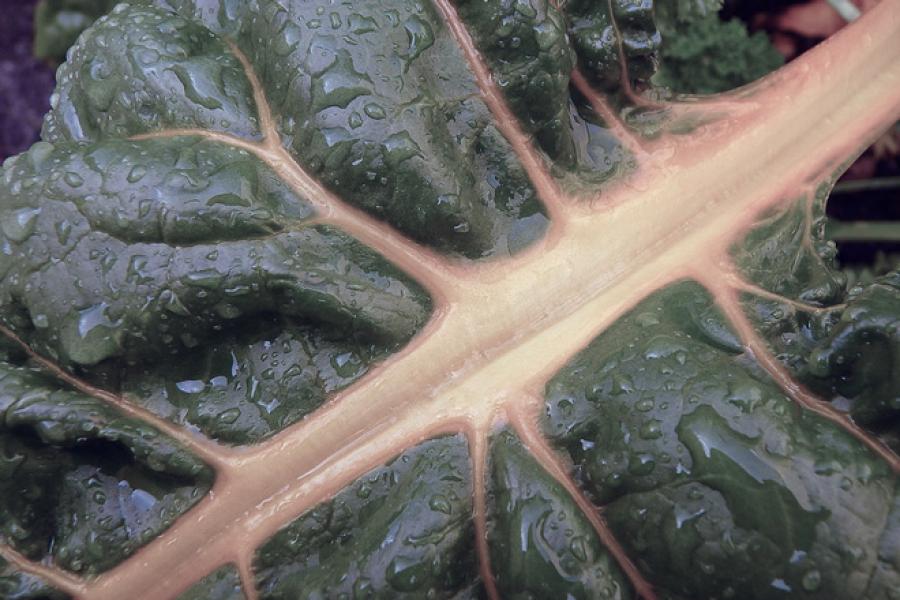Chard
You may know chard by a number of different names, like Swiss chard, spinach beet, mangold, or silverbeet. But no matter what you call it, chard is a delicious and very nutritious green. It has a wealth of nutrients and over a dozen antioxidants, making it one of the best leafy vegetables for healthy diets. What is it?
Ancient Greeks and Romans used chard for medicinal purposes as early as the fourth century B.C. It is native to the Mediterranean region, found mostly in Italy, France, and Spain, but is now also grown in America.
The word "chard" actually comes from the Latin word carduus which means thistle. As this "carduus" was being heavily cultivated in France, the word evolved into the French word "carde" which in English evolved into "chard."
Another source indicates that the word "chard" was adopted by the French in order to distinguish it from a similar celery-like vegetable called cardoon. No matter what you call it, chard certainly has developed somewhat of an identity crisis.
The word Swiss was added to the word chard by 19th century seed catalogs to help distinguish this vegetable from the French spinach varieties.
Chard packs a nutritious punch in a colorful package
Chard is a cousin of the beet. However, only the stalks and leaves of chard are edible, even though, like beets, they have a bulb that grows beneath the surface of the ground.
The green leaves are saturated with a deep red and white tint. The stalks of the chard plant can range in color between orange, white, red, and yellow. A variety of chard can sometimes be found packaged together as rainbow chard.
Preparation and cooking
Like many other leafy greens like kale and spinach, chard can be sautéed, grilled, roasted, or steamed as a side dish of its own or as an ingredient in casseroles mixed with rice, quinoa, or pasta. You can eat the younger plants raw, but it has somewhat of a bitter taste that may be too harsh-tasting for most people.
Lots of Mediterranean dishes feature chard as part of the recipe. It can be used as ingredients for menestras, the Spanish vegetable casseroles. If stored properly in the refrigerator, chard can last up to two weeks. One of the best ways to cook chard is to boil it in a similar way you would other greens, making a traditional Southern dish that has a long history in America. Another simple recipe is to saute quickly in a skillet and toss it with some lemon juice, olive oil, and garlic.
Vegetarians frequently use chard in recipes, and one healthy idea is to create a spicy vegetable tart pie using tofu, egg whites, mushrooms, and a crust made from various seeds and walnuts.
During the peak season for chard, stock up and try adding this green to soups, pasta, quiche and other baked vegetable and cheese dishes. The nutritional benefits are incredible and you'll be enjoying a time-honored member of the family of greens!
no matter what you call it, chard is a delicious and very nutritious green. It has a wealth of nutrients being one of the best vegetables.
Nutritional value
Chard is considered one of the world's healthiest vegetables for several reasons. It has at least thirteen known antioxidants, including syringic acid, which helps regulate blood sugar levels, and kaempferol, known for its ability to benefit cardiovascular health. The stems and veins of the plant also have nutrients called betalains that help reduce inflammation and detoxify the body.
As if that's not enough, chard is an excellent source of vitamins K, A, and C, as well as a long list of nutrients that includes, calcium, iron, zinc, and phosphorus. Chard is also low in fat and cholesterol, and contains protein and dietary fiber. This very common green leafy vegetable is actually quite unique for its arsenal of healthy benefits.
Chard - Swiss chard, spinach beet, mangold, silverbeet.
beta vulgaris (Beotideae)

